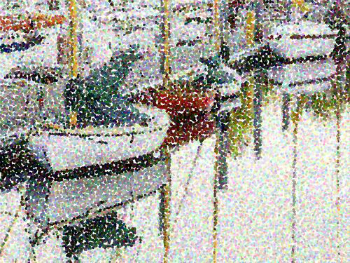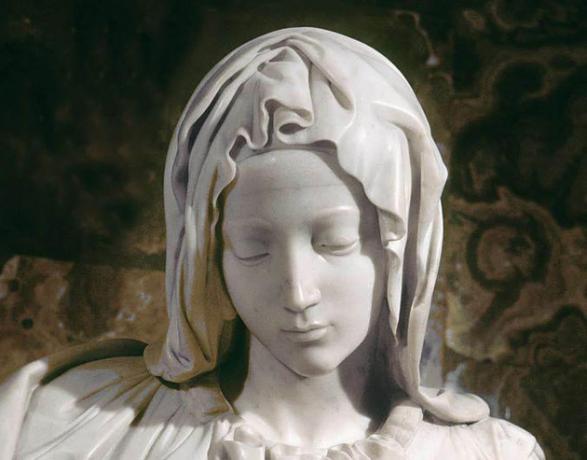O "Pointillism” (from French pointillism) was a painting technique created in France in the mid-1880s. In it, tonal decomposition is obtained from tiny brushstrokes.
This movement was also known as punctilhismo, chromo-luminarismo, neo-impressionism, dot painting or divisionism.
Pointillism is centered on the way in which color is produced with the brush, in a pictorial model of a mathematical nature in which colors are juxtaposed (and not mixed).

origin of movement
Scientific research in the field of optics marked this movement, especially by Michel Eugène Chevreul (1786-1889). In 1839 he published a study on the law of complementary colors entitled “The law of simultaneous color contrast”.
The analyzes of Hermann von Helmholtz (1821-1894) on the theory of trichromatic color vision (1878) also contributed greatly.
Finally, it is noteworthy that pointillism was the precursor of pixelization and chromatic separation techniques for television.
Main features
It should be noted that pointillism was a technique developed from the
impressionist movement, especially with regard to their aversion to the line as a delimitation.The decomposition of colors and luminosity as a way to create dimension and depth, as well as the preference for painting outdoors in order to capture light and color, are also tributary that movement.
However, pointillism is more focused on geometric cutting or scientific research on color. The objective is to obtain brighter tones that transmit light and heat.
In classical painting techniques, the delimitation of forms is obtained by lines and colors by mixing paints.
In pointillism, the juxtaposition of primary colors separated by very small white spaces ends up mixing images and colors.
In this way, a third color is produced which, seen from a distance, allows a dotted image to become continuous as it blends into the viewer's eyes, which will have the impression of a whole.
Therefore, the tone is decomposed from the primary colors, which give rise to secondary colors that constitute (delimit) the shape of the represented objects. This is because the prismatic color change enhances impressions and tones.
Learn more about Colors.
Main Artists and Works
The artists who stood out the most in the art of pointillism were:
Paul Signac (1863-1935)
French painter and one of the greatest representatives of pointillism. He produced several works of which the following stand out: “A Ponte De Asnieres” (1888) and “Entrance to the Port of Marseilles” (1911).

Georges Seurat (1859-1891)
French painter considered one of the pioneers of the pointillist movement. He is the author of “Sunday afternoon on the island of Grande Jatte" (1884) and "The circus” (1890-1891).

In addition to them, artists were also influenced by pointillism:
- van gogh (1853-1890)
- Henri Matisse (1869-1954)
- Pablo Picasso (1881-1973)
Also know about the post-impressionism.
Pointillism in Brazil
In Brazil, during the First Republic (1889-1930), pointillism marked the works of Belmiro de Almeida (1858-1935) and Eliseu Visconti (1866-1944).





